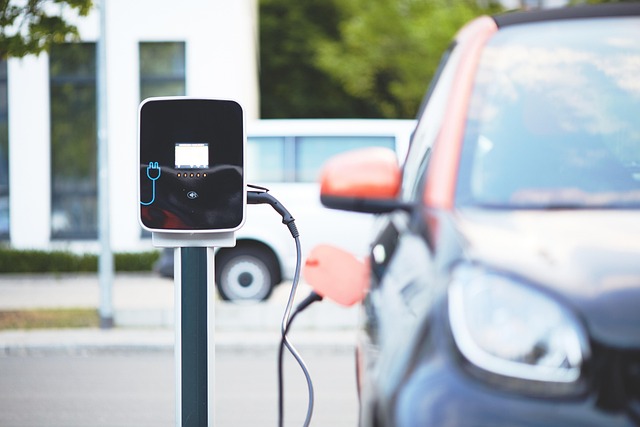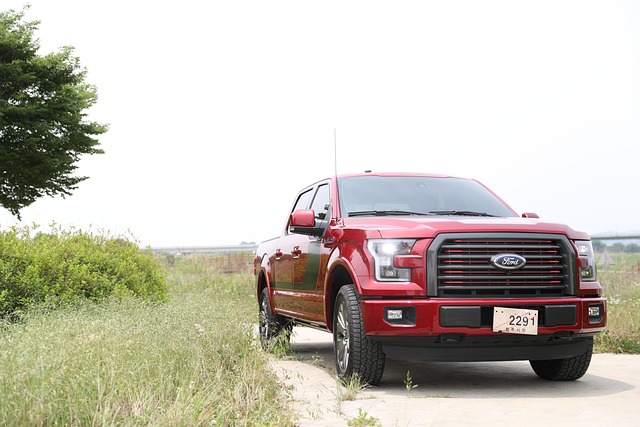Looking to register your car in California? Navigating the process can seem daunting, but with the right preparation, it’s straightforward. This guide breaks down everything you need to know for a seamless registration experience. From understanding key requirements and gathering essential documents for VIN verification to choosing the right registration type and submitting your application, we’ve got you covered. Master the art of California car registration with our step-by-step approach, ensuring a smooth and efficient process.
- Understand California Car Registration Requirements
- Gather Necessary Documents for VIN Verification
- Perform Vehicle Identification Number (VIN) Check
- Choose an Appropriate Registration Type and Fee Payment
- Submit Application and Receive Your Registration Papers
Understand California Car Registration Requirements

Before registering your car in California, it’s crucial to understand the state’s specific requirements. One key aspect is ensuring accurate and up-to-date vehicle identification number (VIN) verification. Every vehicle in California must have a valid and verifiable VIN for registration and title issuance. This process involves confirming that the VIN on the car matches the one reported by the manufacturer, which can be done through a mobile vin inspection or online databases.
California’s Department of Motor Vehicles (DMV) mandates this step to combat fraud and ensure only legitimate vehicles are registered. A mobile vin verification service can be particularly convenient, as it allows you to complete this crucial part of the registration process from the comfort of your location. This is just one of several steps in the registration process, which includes providing necessary documents, passing emissions tests, and paying associated fees.
Gather Necessary Documents for VIN Verification

Before heading to the California Department of Motor Vehicles (DMV) to register your car, make sure you have all the essential documents ready. One crucial piece is the Vehicle Identification Number (VIN), which serves as a unique fingerprint for your vehicle. To facilitate this process, many individuals opt for convenient services like a mobile vin verifier or mobile vin inspection, as it saves time and effort. These services can provide an accurate VIN verification, ensuring that all details about your car—from its make and model to its previous owners—are accurately captured.
For the actual verification, you’ll need documents such as the title certificate (if applicable), registration card, proof of insurance, and a valid driver’s license. Additionally, you should bring along any relevant records related to recent repairs or maintenance work. Having these prepared ensures a smoother process during your visit to the DMV for car registration, allowing you to quickly complete all necessary steps.
Perform Vehicle Identification Number (VIN) Check

Before registering your car in California, performing a Vehicle Identification Number (VIN) check is a crucial step. This involves verifying the VIN through a trusted mobile vin verification service or by visiting a designated inspection station. The state requires this process to ensure that the vehicle’s details match the information provided by the manufacturer and to prevent fraud.
A mobile vin verifier or VIN inspection service can provide on-demand, accurate checks, making it convenient for California residents. These services use advanced technology to cross-reference the VIN with databases, offering peace of mind and a seamless registration experience. This step is essential in maintaining the integrity of vehicle records and ensuring that all legal requirements are met during the registration process.
Choose an Appropriate Registration Type and Fee Payment

When registering your car in California, understanding the different registration types is essential. The choice depends on factors like vehicle age, use, and ownership status. For instance, private passenger vehicles typically require a standard registration, while commercial or older cars might need specialized options. It’s crucial to check with the California Department of Motor Vehicles (DMV) for precise guidelines.
Fees vary based on the registration type and your car’s characteristics. Typically, you’ll pay a base fee plus additional charges for emissions testing, title transfer, and other services. Consider using a mobile vin inspection or verification service to streamline the process, ensuring accuracy through technology that checks your vehicle identification number (VIN) and related data. This modern approach can save time, offering convenience during registration while adhering to California’s requirements.
Submit Application and Receive Your Registration Papers

After completing the necessary steps for preparation, it’s time to submit your application. This involves providing all required documentation and fees to the DMV (Department of Motor Vehicles). Make sure your vehicle passes a vin inspection or uses a mobile vin verifier to ensure accuracy in the verification process. A mobile vin inspector can be particularly convenient as they can conduct the check at your location, saving you time and effort.
Once approved, you will receive your registration papers. These documents confirm that your car is legally registered in California. Keep these records handy for future reference and always ensure your vehicle complies with state regulations. Regularly updating your information, such as address changes, is essential to maintain accurate records.
Registering a car in California involves understanding specific requirements, gathering essential documents, and completing a VIN verification process. By adhering to these steps, from choosing the right registration type to submitting your application, you can ensure a smooth transition into California’s vehicular landscape. Remember, a valid vehicle identification number (VIN) check is crucial for a successful registration, so make sure to have all necessary documentation ready before beginning the process.



